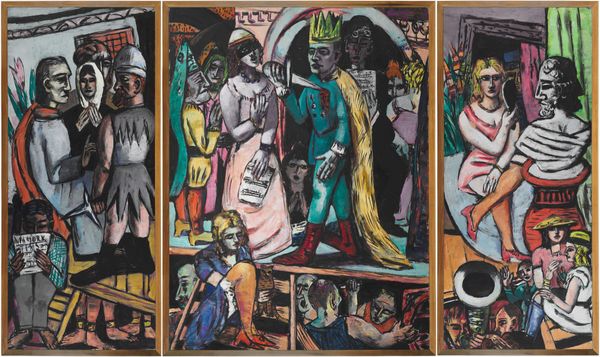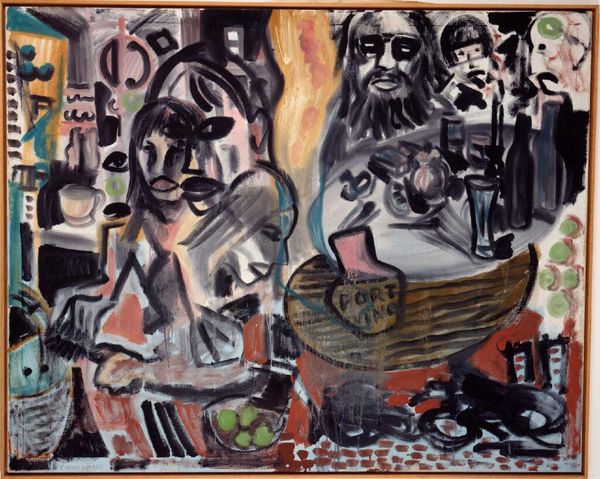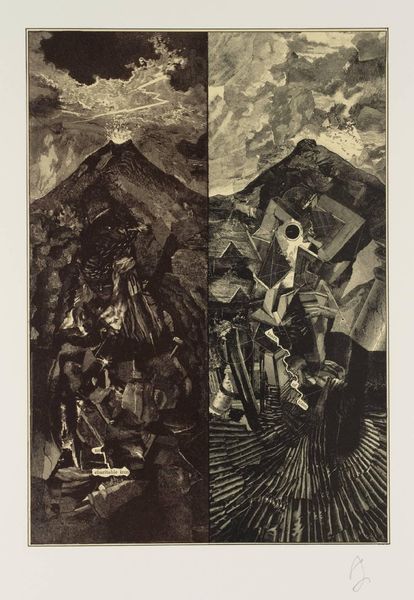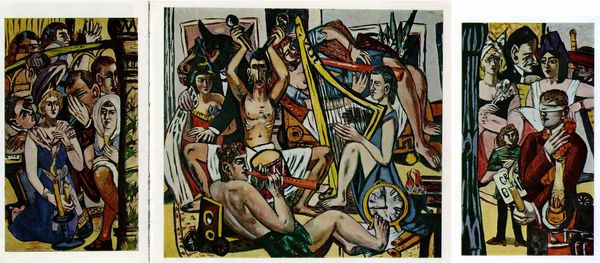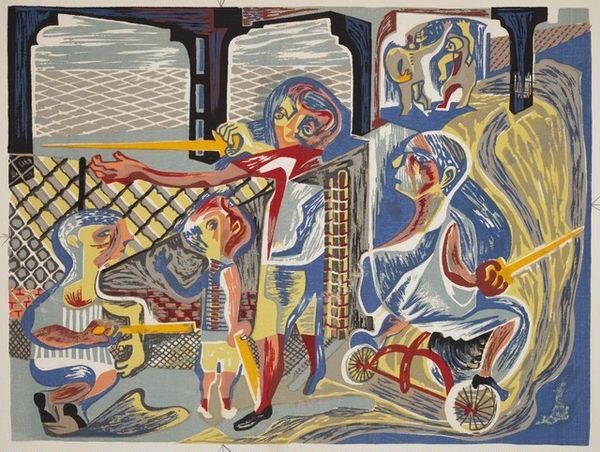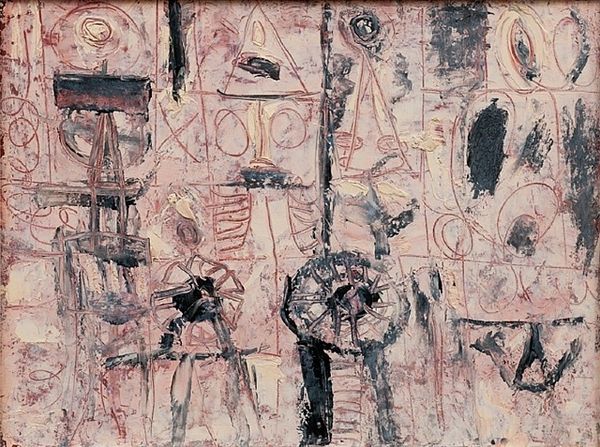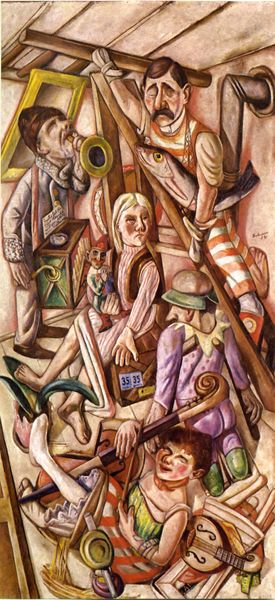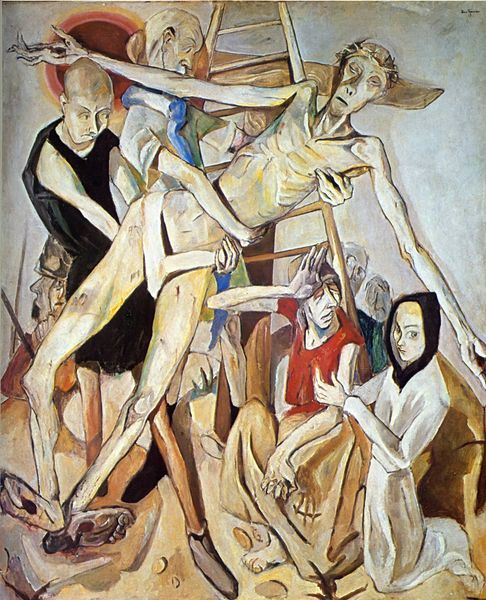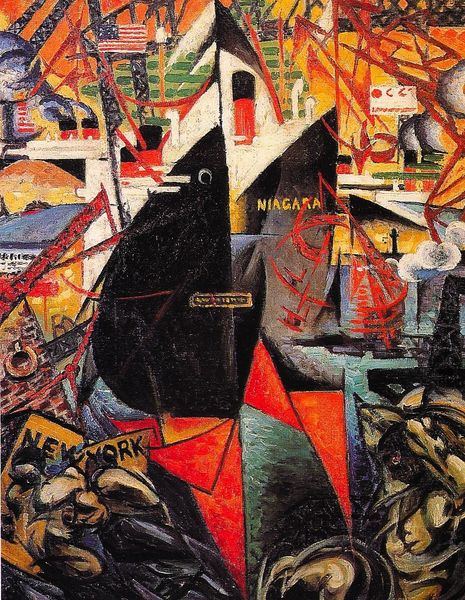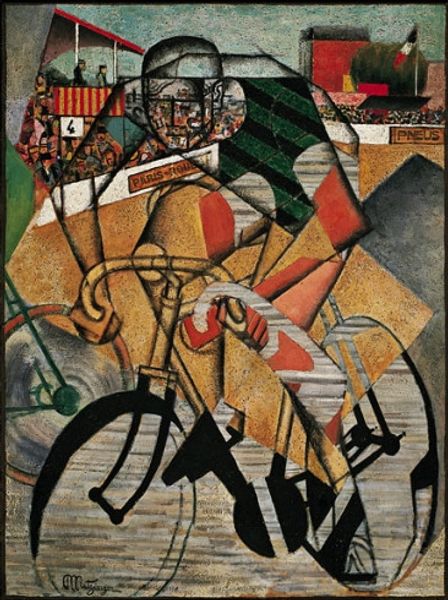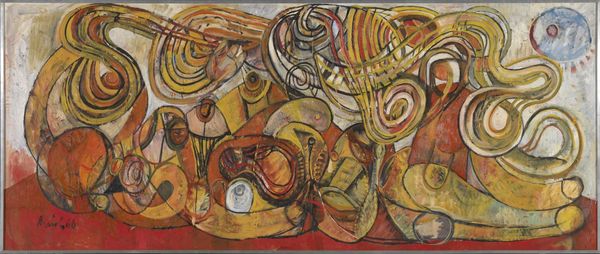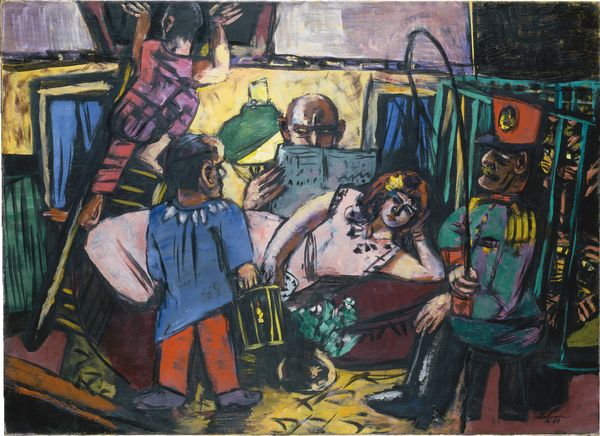
Melancholia (triptych) 1946
Dimensions: overall: 182.9 x 254 cm (72 x 100 in.) first panel: 182.9 x 76.2 cm (72 x 30 in.) second panel: 182.9 x 101.6 cm (72 x 40 in.) third panel: 182.9 x 76.2 cm (72 x 30 in.) overall framed: 185.4 x 261.6 cm (73 x 103 in.)
Copyright: CC0 1.0
Editor: Here we have Karl Zerbe’s *Melancholia*, a triptych with no specific date, housed here at the Harvard Art Museums. The strange scenes depicted create such a sense of unease. What do you see in this piece? Curator: I see a direct engagement with the socio-political anxieties of Zerbe's time. The fractured imagery and symbolic figures evoke the chaos and disillusionment following World War II. Consider the artist's biography as a German émigré navigating the American art world. Editor: That’s interesting. So the triptych form… Curator: Yes, the triptych form itself, traditionally used for religious altarpieces, takes on an ironic tone. What does it mean to elevate such unsettling imagery to a sacred status? Editor: It definitely adds another layer to it. Curator: Indeed, it asks us to confront uncomfortable truths about society and the human condition. A powerful statement on the public role of art, wouldn't you agree? Editor: Absolutely, I hadn't considered its public and political implications to such an extent. Thanks!
Comments
No comments
Be the first to comment and join the conversation on the ultimate creative platform.
